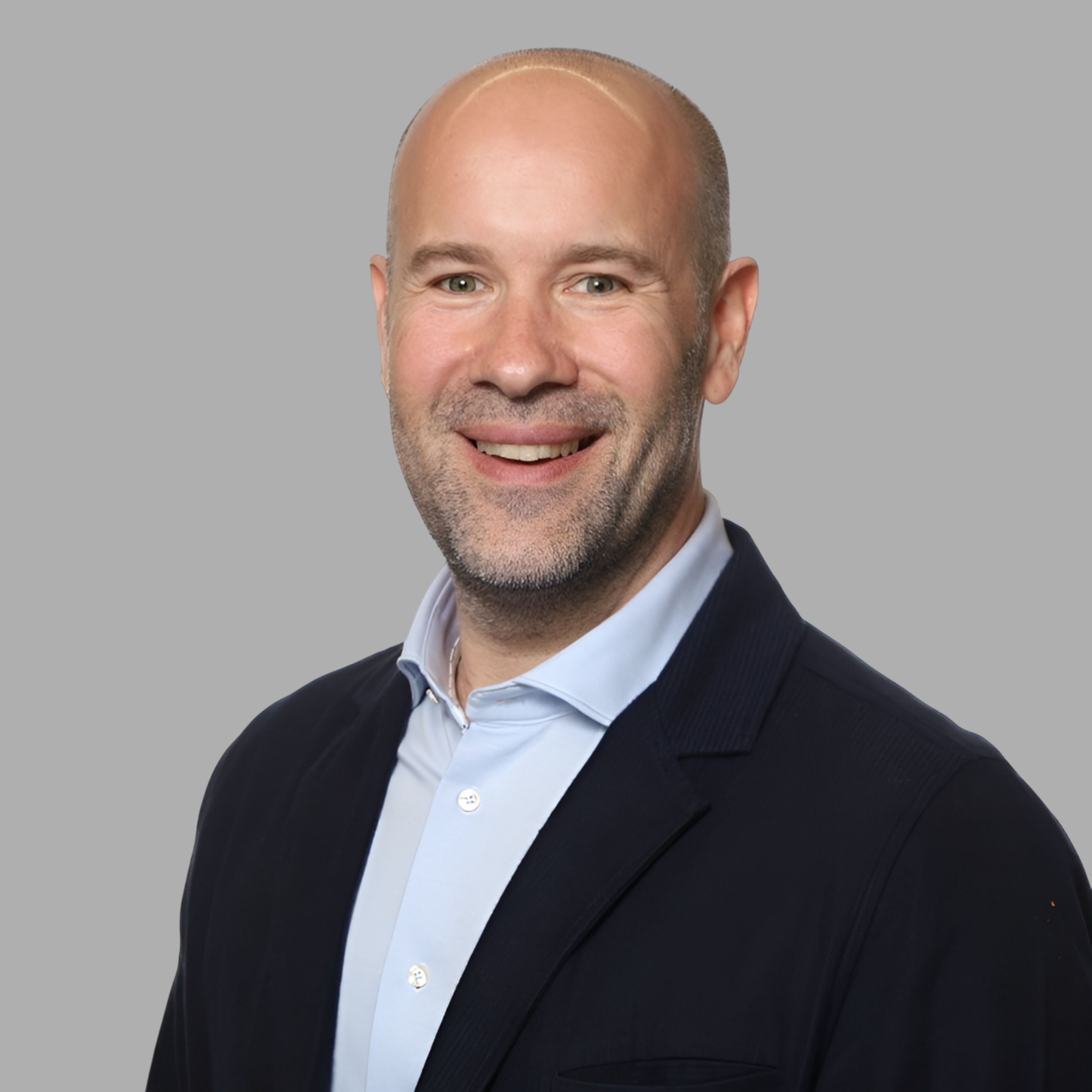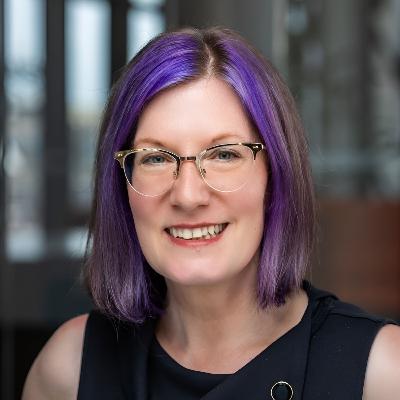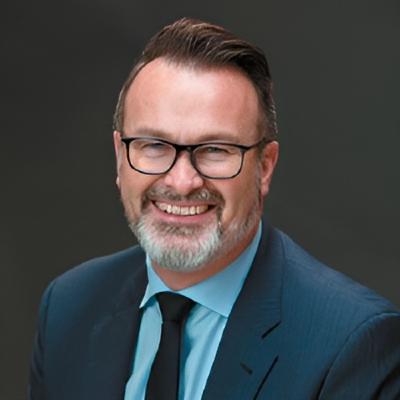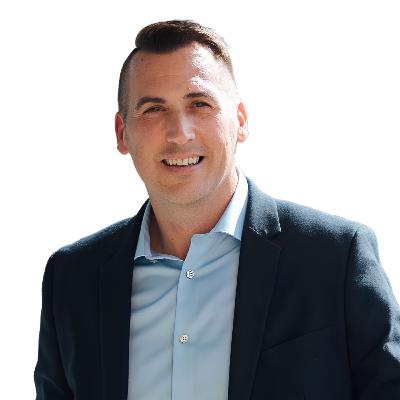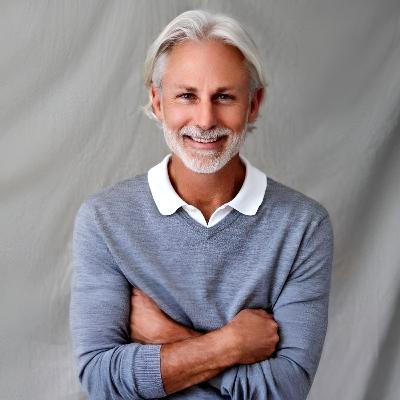Discover C-Suite Sales & Marketing Perspectives
C-Suite Sales & Marketing Perspectives

C-Suite Sales & Marketing Perspectives
Author: Steven MacDonald
Subscribed: 3Played: 1Subscribe
Share
© 2024 ContentStrategies.io
Description
Welcome to the C-Suite Sales & Marketing Perspectives podcast, a resource of the latest updates and insights in B2B growth strategies. Join us as we engage with CMOs, CEOs, and CROs at the forefront of innovation. Discover how these experts push boundaries, experiment with new approaches, and successfully implement cutting-edge strategies. Stay informed and ahead in the ever-evolving landscape of B2B sales and marketing with this show.
239 Episodes
Reverse
Episode #239:Dr. Adrian Seeger, Chief Sales Officer at thyssenkrupp Schulte, explains why fundamental restructuring must start with the customer, not with internal cost-cutting. He describes customer centricity as a shared mindset that reaches far beyond tools and dashboards. Adrian urges every C-suite leader to spend meaningful time in direct conversations with customers. He shows how treating sales as a value center creates alignment, trust, and sustainable B2B growth.“If we start with the customer and the customer's needs, we will carry out a more focused restructuring process, and we will have the chance to restructure the right things and be stronger for the future. The view on the customer is a lasting thing and more strategic, and it will pay off in the profitability of the company in the future.” – Dr. Adrian SeegerThis episode goes deep into how customer-led decision-making dissolves internal friction, strengthens alignment, and empowers leaders to build more resilient, profitable organizations. Adrian shares decades of C-suite wisdom on why customer proximity outperforms dashboards, why sales must be treated as a value engine, and why leadership must champion the voice of the customer daily.Follow Dr. Adrian Seeger on LinkedInFollow Steve MacDonald on LinkedIn
Episode #238:Rich Watson, CRO at Amira Learning, explains why customer experience is now the primary driver of competitive advantage. He highlights how AI accelerates product creation, making experience the true differentiator. He outlines why renewals and expansion depend on consistent value. He also shows how organizations can evolve compensation, structure, and technology to align around the customer journey.“Customer experience is going to rule everything because solutions are easier to build than ever, and the real differentiator will be how companies deliver value.” – Rich WatsonThis episode explores why CX has overtaken product features as the actual growth engine. Rich shares practical examples from sales, customer success, and product teams, showing how organizations can unify around value delivery to strengthen renewals, reduce churn, and accelerate expansion paths in a changing AI landscape.Follow Rich Watson on LinkedIn Follow Steve MacDonald on LinkedIn
Episode #237:Alena Iakaitite, CMO at Ozon Global, explains that B2B pipelines rarely leak leads but instead leak trust, which modern buyers increasingly rely on peers to validate. She shows how even a single failure can spread across business communities within hours, and why transparency, promise-keeping, and internal alignment are the only durable defenses. She also demonstrates how consistent communication and accountability create the customer experience that drives long-term growth.“B2B is a business society, and people always communicate with each other. You need to demonstrate consistent experience and build trust across the entire business community. Your brand voice should be the one that is transparent and willing to address what happened and how you will fix it openly.” – Alena IakaititeIn this episode, Alena shows how trust is the real source of B2B leakage. She explores how internal transparency, promise-keeping, and accountable communication fuel customer experience and long-term growth, especially in global environments where a single misstep can quickly spread across entire business communities.Follow Alena Iakaitite on LinkedInFollow Steve MacDonald on LinkedIn
Episode #236:Mark Flanagan, Chief Revenue Officer at LOGEX, explains why customer value must anchor every decision a revenue team makes. He highlights how rigid sales processes create friction that erodes trust early in the buyer experience. He explores why buyers arrive more informed than ever and how CROs must adapt to remain credible.“Your margin for success comes from how buyers experience every interaction and whether they feel understood at each stage.” – Mark FlanaganIn this episode, Mark examines how CROs can reduce friction in the buyer's journey, rebuild trust in a skeptical market, and create systems that keep revenue teams aligned with real customer needs. He highlights why organizations succeed when customer proximity becomes a regular practice, not just an aspiration.Follow Mark Flanagan on LinkedIn Follow Steve MacDonald on LinkedIn
Episode #235:Mark Humphreys, Chief Marketing Officer at Trasna, examines how trust has become the defining currency of growth in B2B relationships. He explains that every partnership, purchase, and brand reputation depends on credibility built through consistent, authentic communication. He also shares how deep customer understanding and one-to-one relationships drive loyalty and long-term success. “Trust is paramount. Everything is built on trust. If there's no trust, then there's no relationship. In the B2B world, people want to be able to trust you more than anything.” – Mark HumphreysIn this episode, Mark outlines why companies must elevate the “voice of the customer” from a one-off activity to a continuous, embedded practice. Drawing on his global experience integrating multiple brands and leading enterprise transformations, he reveals how listening systems, disciplined strategy, and saying “no” to distractions enable brands to bridge the trust gap and turn credibility into sustainable growth.Follow Mark Humphreys on LinkedInFollow Steve MacDonald on LinkedIn
Episode #234:Joni Helminen, Chief Marketing Officer at Barona, explores how CMOs can orchestrate growth by mastering the constant balancing act between short-term results and long-term brand building. Speaking from his experience leading marketing for one of Finland’s largest staffing and recruitment companies, Joni explains why alignment, trust, and creative courage are the cornerstones of sustainable success. “We need to align only on what’s important at any given time, talking to stakeholders internally and figuring out the current balance in business, and then we adjust and support.” – Joni HelminenIn this episode, Joni highlights how internal misalignment weakens business impact, how CMOs can earn credibility by speaking the language of sales and finance, and why balance across B2B and B2C efforts drives measurable results. Through practical insights and a data-driven perspective, Joni shows how alignment transforms marketing from a cost center into a growth engine.Follow Joni Helminen on LinkedInFollow Steve MacDonald on LinkedIn
Episode #233:Ken Rutsky explains why teams often confuse what they do with the problem they solve and how that confusion creates misalignment and weak differentiation. He shows how to define an issue that is big enough to matter yet credible to win, then use it to guide narrative, segmentation, ICP focus, pricing, and the proof of concept experience. The result is more precise positioning, more substantial alignment, and higher conversion.“Obsess about the strategic big problem that you solve for your customers, and get in alignment about why you do that uniquely, how you do that uniquely, and why it matters.” – Ken RutskyIn this conversation, Ken unpacks practical ways to listen and lead, replace feature talk with problem-led storytelling, and say no to off-ICP deals. He shows how a shared problem thesis unites marketing, sales, and product, and how simplifying the buying experience turns alignment into measurable revenue impact.Follow Ken Rutsky on LinkedInFollow Steve MacDonald on LinkedIn
Episode #232: Paul Taylor, Chief Marketing Officer and Senior Vice President at SS&C Blue Prism, explains why handoffs break buyer trust and conversion. He describes orchestration across marketing, sales, and success. He urges leadership to set one revenue story. He demonstrates how alignment enhances win rates and reduces churn.“The winners aren't necessarily those that are generating the most leads. They're the ones that are converting the right ones into lasting customers.” - Paul TaylorThis episode explores why conversion, not volume, is the ultimate growth differentiator. Paul shares how aligning leadership on a single revenue story transforms business culture, eliminates silos, and strengthens long-term customer relationships.Follow Paul Taylor on LinkedInFollow Steve MacDonald on LinkedIn
Episode #231:Nicholas Ghitti, Chief Revenue Officer at Native Teams, explains why trust and alignment beat shiny tools. He breaks down living playbooks, voice of the customer, and shared KPIs. He shows how rituals and AI can coexist to drive execution. He closes with a call for leaders to stay close to the front lines.“Most of the right answers in life are boring. We just don't like it to be that way, but rituals and processes go a long way if they're done properly. This is how we can try to overcome challenges and many others in the company.” – Nicholas GhittiThis episode examines how go-to-market leaders can strike a balance between human connection and modern tools. Nicholas explains why alignment, rituals, and customer understanding create durable systems that evolve beyond templates and drive measurable business impact.Follow Nicholas Ghitti on LinkedInFollow Steve MacDonald on LinkedIn
Episode #230:Emily Ferdinando, Chief Marketing Officer at Bugcrowd, explains why pipeline quality and progression outclass vanity metrics. She details how non-linear journeys demand broader influence tracking. She demonstrates that regional activities account for a quarter of closed opportunities and closes with ABM activation, shared KPIs, and content mapped to stages.“We're no longer doing things just because that's what marketers are supposed to do. We're doing things that are really going to drive business impact.” — Emily FerdinandoIn this episode, Emily breaks down what CMOs must change to align marketing with measurable business outcomes. She shares how redefining attribution, refining ABM activation, and adopting shared sales goals create stronger cross-team accountability and faster revenue growth.Follow Emily Ferdinando on LinkedInFollow Steve MacDonald on LinkedIn
Episode #229:Rebecca Colwell, SVP of Marketing at Yext, explains why AI search adoption is surging and how it reshapes visibility. She shares research on usage and click behavior. She outlines three strategic shifts for marketers and shows how trust and accurate brand facts drive citations.“If you’re not visible in that first moment, you miss the entire opportunity. The goal isn’t just to rank for a keyword, it’s to be cited and trusted by the model so you appear in the answer.” – Rebecca ColwellMarketers are entering a new era of visibility, where AI-generated answers replace search results. Rebecca shares Yext’s findings on how LLMs are changing buyer journeys and what steps leaders can take to earn trust, measure citations, and ensure brands are visible when AI provides the answer.Follow Rebecca Colwell on LinkedIn Follow host Steve MacDonald on LinkedIn
Episode #228:David Reid, CTO & CMO at NOV, shares how enterprise leaders grow by combining near-term cashflow discipline with long-horizon innovation. He explains why corporate groups often reject ideas they did not create. He shows how trust and relationships win complex deals. He closes with practical ways to build healthier, higher-performing teams.“The difference between good and bad strategists is that some people understand this concept, or recognize it as a weakness and compensate for it. You’re always doing something that pays us now so that we can do the big stuff later. It’s a split brain that you need.” – David ReidThis episode explores how leaders can balance innovation and sustainability by pairing entrepreneurial vision with disciplined execution. David also uncovers why internal ownership and trust-based relationships are essential to turning big ideas into scalable growth.Follow David Reid on LinkedInFollow host Steve MacDonald on LinkedIn
Episode #227:Ray Wizbowski, Chief Marketing Officer at ECI Software Solutions, explains how C-suite leaders succeed under a private equity playbook by aligning to exit economics, mastering unit economics, and balancing growth with profitability while reducing churn and investing in practical AI.“You have to understand your unit economics better than anybody else. You have to understand that for every dollar I spend, I get what in return? CAC payback period becomes a lot more meaningful as you're getting through that hold period, being able to say, ‘Well, our CAC payback period is less than 20 months.’ That's now a good story for the next person who wants to invest in the company.” – Ray WizbowskiRay highlights how PE timelines shape strategy and day-to-day decisions. He recommends rigorous unit economics, clear CAC payback, and a disciplined approach to the rule of 50. He also details a churn-first retention motion and practical AI that improve marketing, sales operations, and product value, enabling leaders to protect EBITDA while sustaining double-digit growth.Follow Ray Wizbowski on LinkedInFollow host Steve MacDonald on LinkedIn
Episode #226:Joshua Leatherman explains why many B2B companies stall around 80 to 100 million when a sales-led approach exhausts the easier parts of the market. He shows how to replace random acts of marketing with a scalable go-to-market system that unites demand marketing, sales development, revenue operations, sales, and client success around a shared process and attribution. “Often, private companies hit an inflection point. Once you reach a certain point, around 80 to 100 million, they start to plateau. Usually, this is because they are sales-led and have not built a scalable go-to-market team that includes demand marketing, sales development, revenue operations, and sales and client success. Companies are focused on sales and need to learn how to build scalable teams.” – Joshua LeathermanJoshua highlights a practical blueprint for moving from activity to outcomes. He identifies the core issue as misalignment and missing revenue operations, then outlines how demand marketing surfaces in-market intent while SDR and client success extend pipeline quality and expansion. The result is a predictable motion that scales beyond the plateau and aligns teams with revenue, attribution, and the voice of the customer.Follow Joshua Leatherman on LinkedInFollow host Steve MacDonald on LinkedIn
Episode #225:Naomi Brezi, Chief Revenue Officer at Ruffalo Noel Levitz, explains how to lead through constant transformation without burning out teams or customers. She frames today’s trust recession and shows why credibility must be earned at every touch. Naomi maps a dual-track plan that balances quarterly targets with long-term brand and people investment. She closes with practical ways to protect morale, pipeline, and relationships. “You can't over-communicate when you're leading in times of uncertainty. You have to communicate more and more often, and you have to really make this a practice. This really helps build that trust and honesty.” – Naomi BrezNaomi unpacks the trust recession, dual-track growth, and retaining A-players during reorgs. She shares practical plays like tiered ABM, disciplined ICP focus, transparent town halls, and KPI-aligned accelerators that safeguard culture and pipeline while delivering quarterly results.Follow Naomi Brezi on LinkedInFollow host Steve MacDonald on LinkedIn
Episode #224:Brian Gilman, Chief Marketing Officer at ThetaRay, explains why AI has equalized claims and intensified a B2B trust gap. He shows how quickly getting into the room with C-suite buyers reframes discovery around business outcomes. He details why alignment across product, sales, and finance prevents roadmap drift. He closes with a practical lens for activating authentic customer voice.“As a buyer, I'm more likely to evaluate you as a vendor if you can better articulate what you're going to bring to my business above and beyond just technical specifications, and if your solution can help impact those inherent risks in the business, you provide significantly more value.” - Brian GilmanBrian shows how M&A rigor and an outcomes-first mindset help executives cut through AI-fueled sameness. He explains why quickly getting into the room with the C-suite re-centers discovery on measurable business value. He also highlights how cross-functional alignment protects roadmaps and accelerates adoption in complex deals.Follow Brian Gilman on LinkedInFollow host Steve MacDonald on LinkedIn
Episode #223:Patrick McGuire, Chief Revenue Officer at Kompound, unpacks a trust-first system for scaling sales. He shows how short videos, tailored one-to-one demos, and service-led follow-through turn credibility into revenue, and why involving customer success early keeps wins compounding long after the close.“I really believe that the secret sauce is trust. It's doing business the way it's supposed to be done. If I can't trust you, we can't do business, it's not going to work, and you're not going to close deals. So, I believe the way to 3, 5, 10x your sales is by gaining trust and sharing and loving and giving excellence to people when you get a chance to. It's that trust funnel.” – Patrick McGuirePatrick highlights a practical “Trust Funnel” that maps value-first touches to buying intent. He recommends a lightweight video sequence that diagnoses the buyer’s biggest problem, shifts into focused one-to-one sessions, and brings customer success into motion to sustain momentum with the goal of creating a human-centered path to higher win rates, lower CAC, and repeatable growth.Follow Patrick McGuire on LinkedInFollow host Steve MacDonald on LinkedIn
Episode #222:Stephanie Davis Smith, CMO at The N2 Company, demonstrates how to mitigate channel overwhelm by focusing on areas where execution excels. She explains a six-stage franchise psychology that converts excitement into loyalty. She details budget-efficient content reuse and ROI rigor. She ties it all together with the voice of the customer alignment.“Get down to the people on the ground and talk to them because they always know what they need. Don’t create too many levels where you lose sight of what’s happening on the ground. That’s where the great decisions and ideas come from.” - Stephanie Davis SmithMarketers will learn how Stephanie trims channel sprawl, repurposes content for efficient reach, and uses customer psychology to turn early excitement into lasting advocacy. She shows where to double down, when to pause experiments, and how the voice of the customer aligns teams to measurable outcomes that support revenue and retention.Follow Stephanie Davis Smith on LinkedInFollow host Steve MacDonald on LinkedIn
Episode #221: Amit Shankardass, CMO at VXI Global Solutions, explains why client centricity must guide decisions. He demonstrates how to strike a balance between today’s needs and both near-term and long-term horizons. He explores human biases that block honest listening. He shares practical ways to institutionalize customer voice.“A customer should be the North Star that guides how we begin to think, process, and evaluate.” - Amit ShankardassThis conversation demonstrates how leaders can anchor decisions within the buyer’s frame, mitigate bias when processing feedback, and foster alignment across sales and marketing. Amit outlines habits that scale trust and revenue, from strategic reviews that anticipate tomorrow’s needs to advisory boards that surface hidden opportunities.Follow Amit Shankardass on LinkedInFollow host Steve MacDonald on LinkedIn
Episode #220: Chris Green, Chief Revenue Officer at FreshRealm, explains why process beats outcome chasing in turbulent companies. He shows how accurate and timely communication aligns boards, founders, and teams. Chris connects customer conversations to sharper ICP focus and growth path choices. He closes by emphasizing that relationships are the true compounding asset. “The key is accurate and timely communication of what's happening, what you're thinking, and what you're going to do about it. Today, change is constant and happens at a rapid pace. So, communicate as often as we can and in a meaningful way. It’s the human element of turning a company into a revenue machine.” – Chris GreenChris explains how to cut through chaos by setting precise rhythms, reporting what is happening and what will be done next, and creating space for future-focused customer conversations that sharpen ICP and roadmap choices. He shows leaders how to align boards and founders, rally teams around purpose and relationships, and sustain momentum through frequent, meaningful communication that builds trust and turns scattered effort into a consistent path to revenue across functions and in the face of changing market conditions today.Follow Chris Green on LinkedInFollow host Steve MacDonald on LinkedIn









